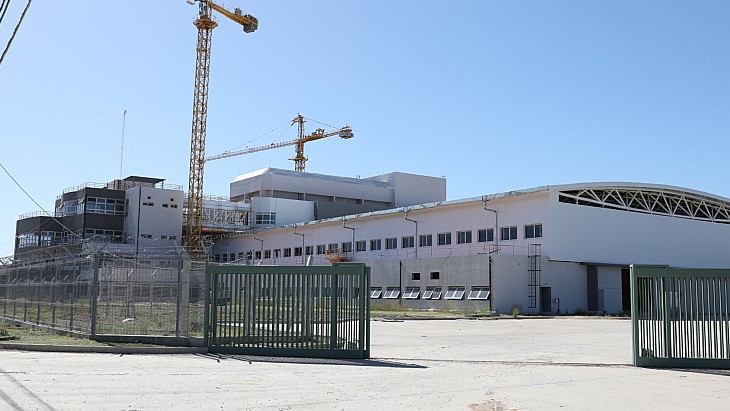The RA-10 - a 30 MWt open-pool research reactor - is being constructed at the Ezeiza Atomic Centre in Buenos Aires province to replace the RA-3 reactor on the same site. This 10 MWt pool-type reactor began operations in 1967. The RA-10 will be used for the production of medical radioisotopes, as well as irradiation tests of advanced nuclear fuel and materials, and neutron beam research.
Project manager Herman Blaumann, in a project update on the CNEA website, said the civil building works would be finished in three months, with construction of the reactor completed next year. "From that moment, preliminary tests and commissioning will be carried out, so it is expected that the RA-10 will be in operating condition in 2025." He added: "Very few countries have the capacity to design and build a reactor like the RA-10 and ours is one of them."
The RA-10 project was approved by the government and officially started by CNEA in June 2010. Argentina's Nuclear Regulatory Authority granted a construction licence for RA-10 in November 2014. The civil works for the reactor began in 2016. Civil works are being carried out by GCDI, while INVAP provides components and assemblies for the reactor.
"The CNEA provides what is essentially nuclear, that is, the fuel, the instrumentation and the protection system of the reactor. But more than 80 national companies also participate, many of them SMEs, which gives direct work to more than 1500 people,” said Blaumann.
The RA-10's design is based on the 30MW Opal reactor which Argentina sold to Australia but, according to CNEA: "Every reactor design is different - in particular the power is calculated based on the applications that it will offer. The RA-10 is expected to be used for purposes that the Opal does not have, such as the irradiation of materials and fuel rods and elements. These applications demand a higher power and therefore a different core design, with its associated cooling system, also with other parameters. In addition, they require innovations in the reactor protection system, which in this case is of our own design."
When it is up and running, RA-10 will have the capacity to cover 20% of world demand for the "widely used radioisotope molybdenum, from which technetium is obtained". CNEA adds: "It will also be possible to produce other radioisotopes that are not made in the country today and that are being widely used in the world, such as lutetium, which is applied to treat prostate cancer and other pathologies."
Argentina sees export opportunities from the new research reactor's output, especially given that a number of reactors which currently produce radioisotopes are scheduled to go out of service. It also says it could produce 80 tonnes of doped silicon per year through exposure to neutrons, providing USD10 million a year for Argentina and it will also be able to "qualify the fuels that Argentina manufactures for both power and experimental reactors - currently they have to be tested and qualified in facilities abroad, some of which have been closing down".
Other facilities at the RA-10 site include the radioisotope processing plant and the Argentine Neutron Beam Laboratory "aimed at exploiting the neutron beams that originate in the reactor core for science and technology ... in addition, there will be a materials testing laboratory to study their behaviour under irradiation. This includes fuel element rods and plates, but also structural materials intended for fourth-generation nuclear reactors."





_30199.jpg)
_72306.jpg)

_49562.jpg)





